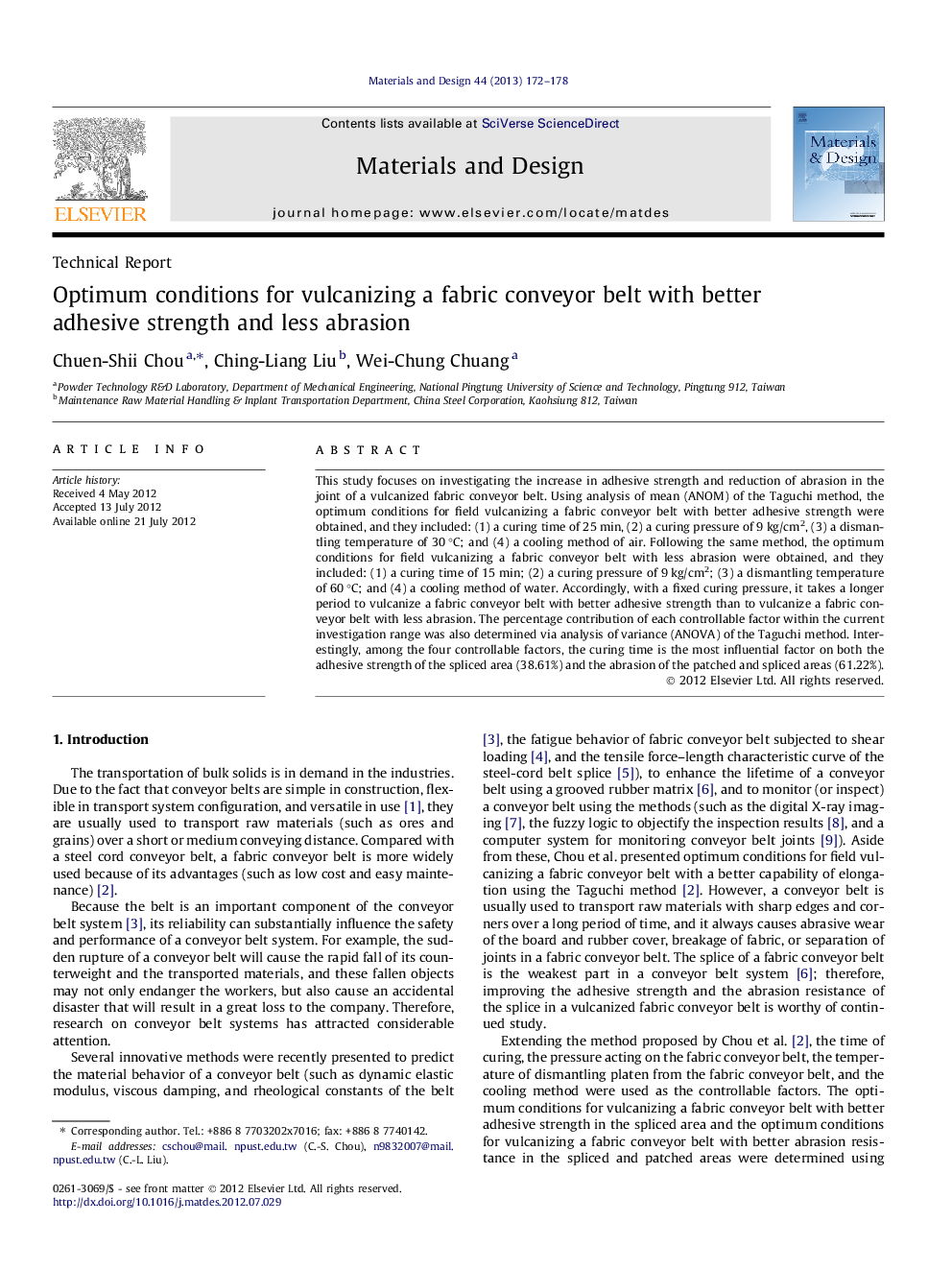| Article ID | Journal | Published Year | Pages | File Type |
|---|---|---|---|---|
| 830321 | Materials & Design (1980-2015) | 2013 | 7 Pages |
This study focuses on investigating the increase in adhesive strength and reduction of abrasion in the joint of a vulcanized fabric conveyor belt. Using analysis of mean (ANOM) of the Taguchi method, the optimum conditions for field vulcanizing a fabric conveyor belt with better adhesive strength were obtained, and they included: (1) a curing time of 25 min, (2) a curing pressure of 9 kg/cm2, (3) a dismantling temperature of 30 °C; and (4) a cooling method of air. Following the same method, the optimum conditions for field vulcanizing a fabric conveyor belt with less abrasion were obtained, and they included: (1) a curing time of 15 min; (2) a curing pressure of 9 kg/cm2; (3) a dismantling temperature of 60 °C; and (4) a cooling method of water. Accordingly, with a fixed curing pressure, it takes a longer period to vulcanize a fabric conveyor belt with better adhesive strength than to vulcanize a fabric conveyor belt with less abrasion. The percentage contribution of each controllable factor within the current investigation range was also determined via analysis of variance (ANOVA) of the Taguchi method. Interestingly, among the four controllable factors, the curing time is the most influential factor on both the adhesive strength of the spliced area (38.61%) and the abrasion of the patched and spliced areas (61.22%).
► Optima for splicing a fabric conveyor belt with better adhesive strength and less abrasion were studied. ► Under the optima, the average adhesive strength of the fabric conveyor belt was 8.398 kgf/cm. ► Under the optima, the average abrasion of the fabric conveyor belt was 102.25 mm3. ► The curing time is the most influential factor on the adhesive strength and abrasion.
